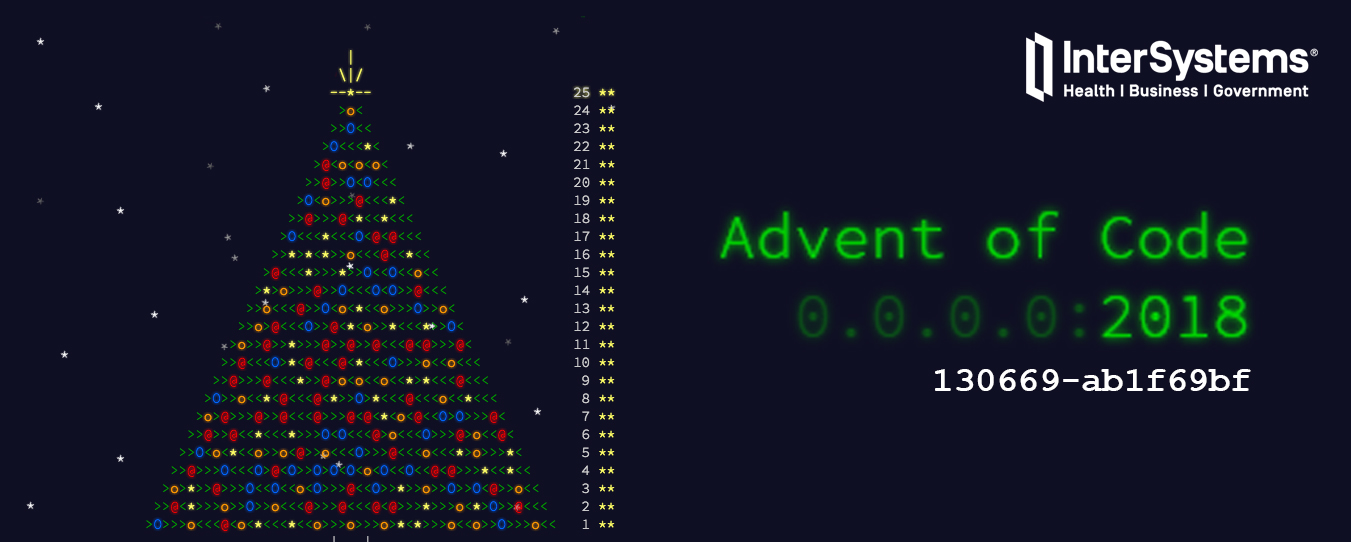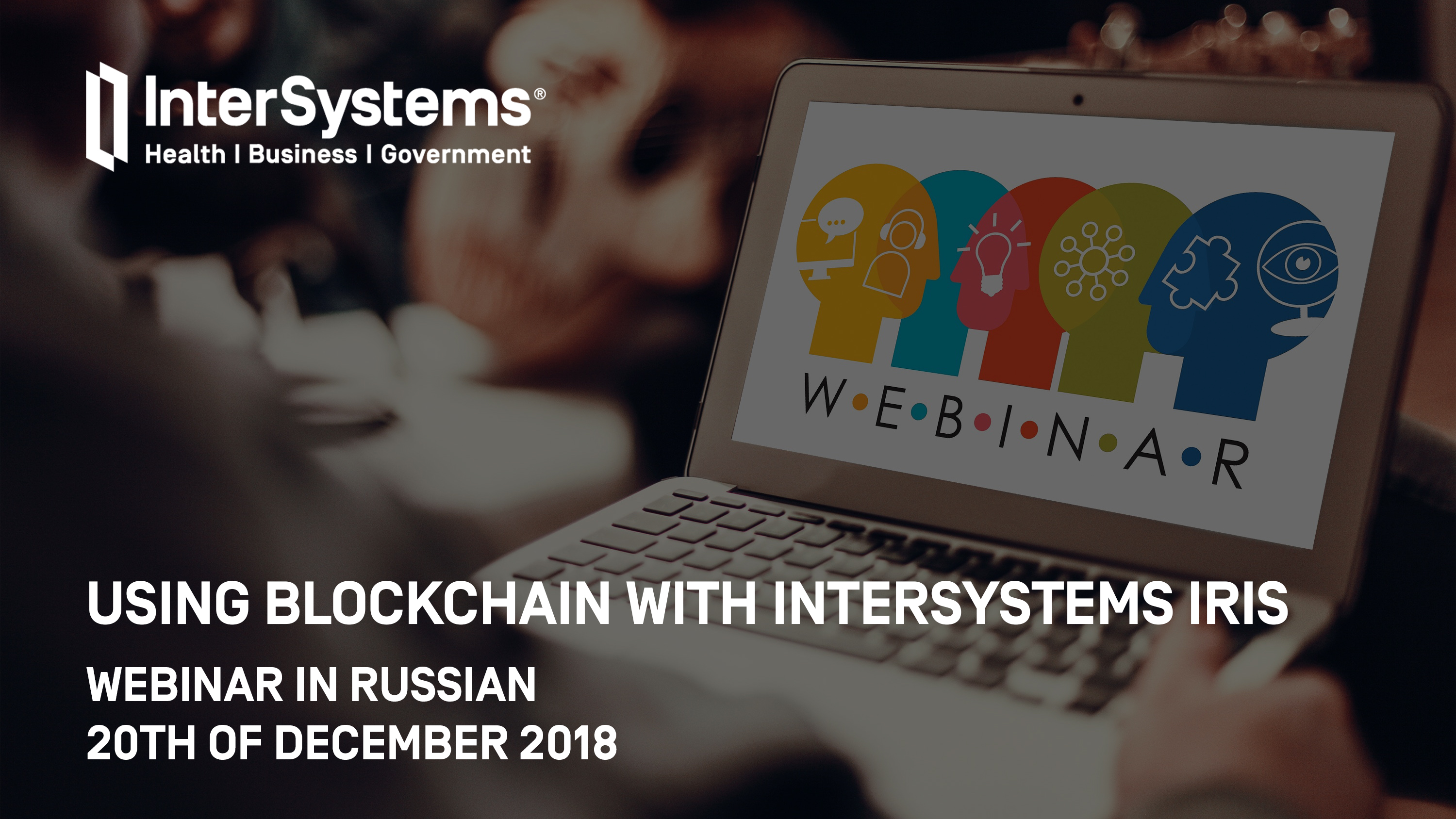Hi Everyone!
As you know Advent of Code 2018 is in full swing! Till the 25th of December 2018 each day 2 programming problems to sharpen your programming skills!
And now we're ready to present great prizes for Members of InterSystems Global Masters Advocate Hub!







